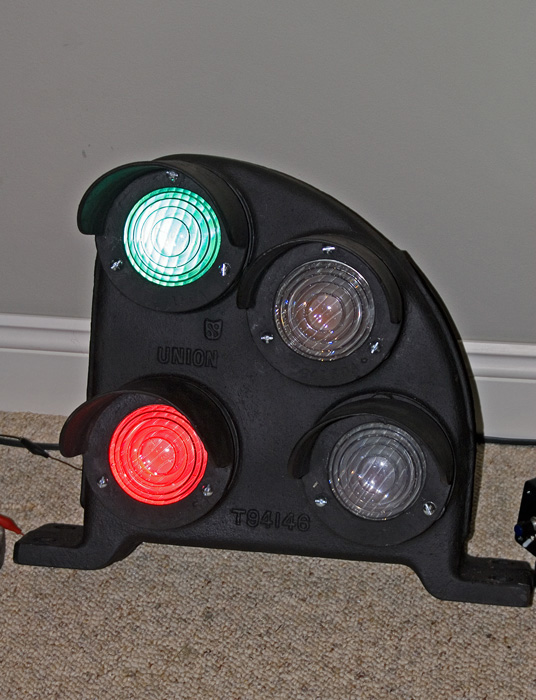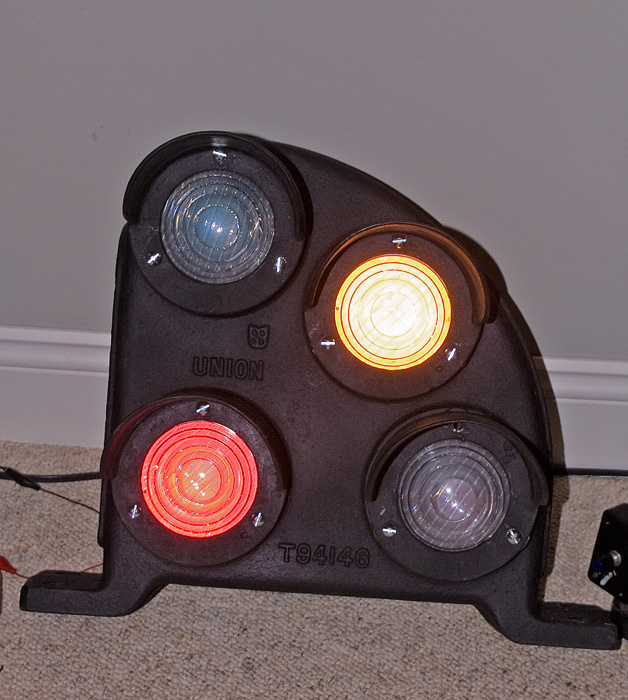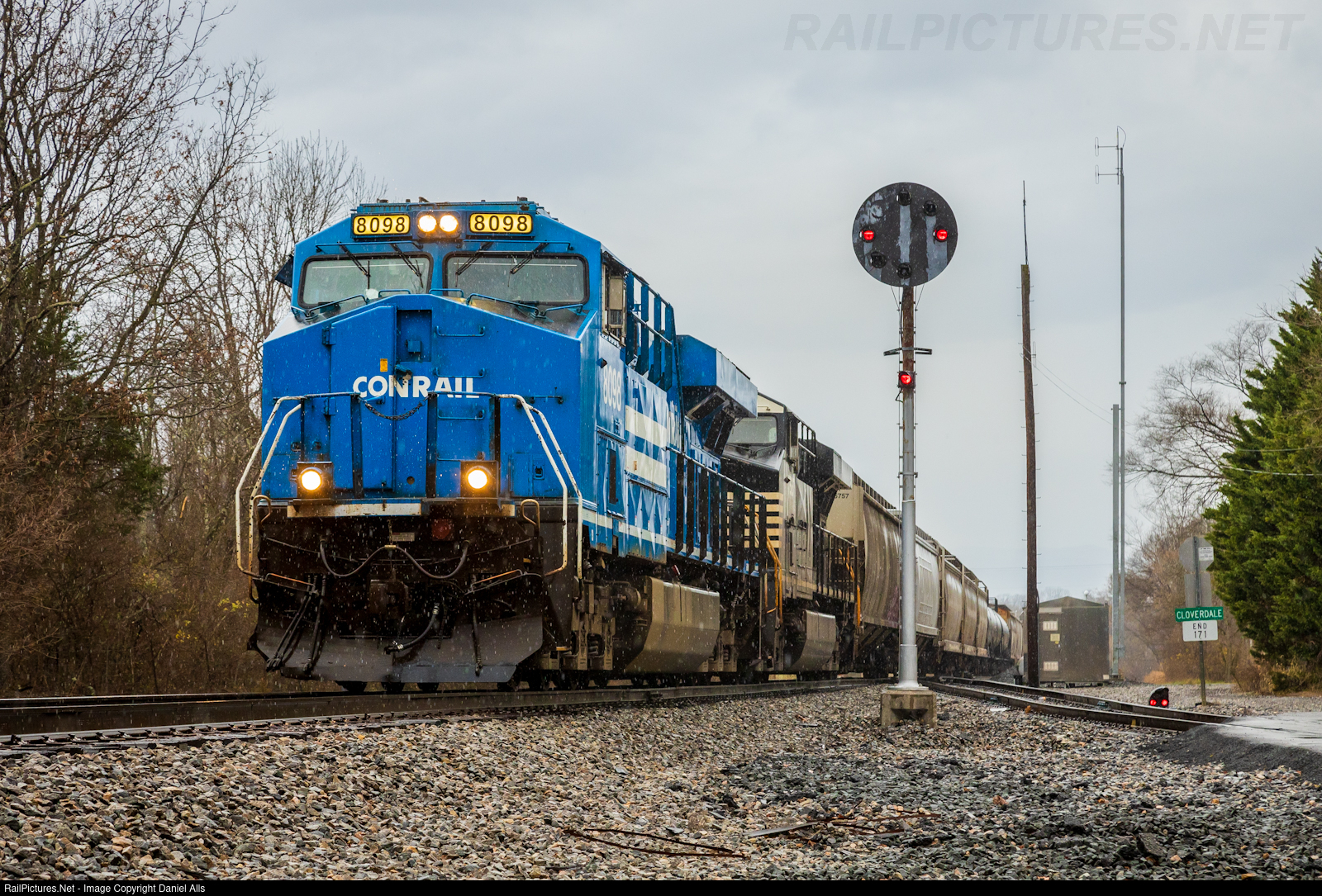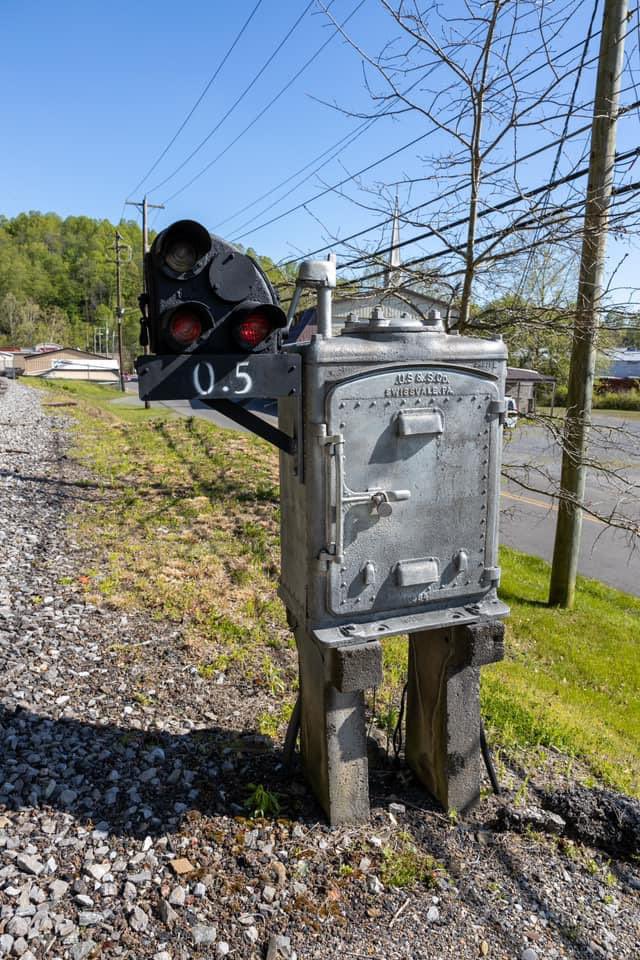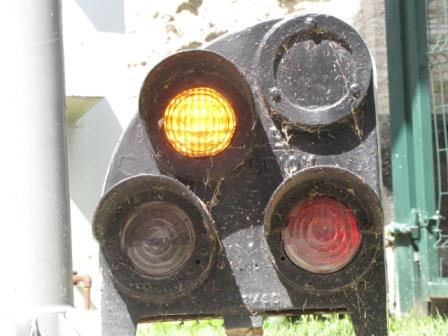Well last time around we explored the signaling system that ate the Northeast. Now we can explore the signaling system that is eating the signaling system that ate the Northeast. The
Seaboard Coast Line railroad, itself an intermodal amalgam of the Atlantic Coast Line and Seaboard Airline, is the 'S' in CSX and the Seaboard system of signals are those which CSX has chosen to standardize on, brushing away the B&O CPLs, C&O color lights and former Conrail NORAC signals. The reasons is not really due to any inherent superiority, but has more to do with major flaws in both the C&O and B&O systems and the company headquarters being in Jacksonville, FL and NORAC signals were not invented there. Note I am not going to call these CSX signals because there is still little that CSX has had to do with them, unlike NORAC, which may have borrowed most of the signal rules, but still put its own stamp on them.
Unlike the other dominant signaling system in the South used by the Southern Railway, Seaboard uses speed signals and today is one of the three major codes of speed signaling code along side NORAC and CROR (Canadian signals). It shares a lot in common with those other codes including the three head (Normal, Medium, Slow) system and Y/G for Approach Medium. However Seaboard is defined more by its differences than its similarities.
Seaboard's most defining characteristic is its use of Lunar White and
only Lunar White for restricting. There are a few smaller route signaling systems that have this feature, but ever since the availability of *R*, no other major railroad has relied on just Lunar White.
Back when the Seaboard adopted Lunar for Restricting, Restricting was a seldom used indication, mostly seen where there were routed leading to unsignaled track like yards. For normal interlockings the Seaboard did not provide any capability to display a "call-on" and therefore they made do with US&S N-3 and 3-color searchlight heads. However in modern times it is CSX's policy to provide a restricting capability on
all controlled signals. This in turn leads to the frequent use of 4-lamp signal heads, which were nearly unheard of in the area of searchlights and pre-cast color light heads.
The use of LW for Restricting of course frees up R/Y and R/R/Y for Medium Approach and Slow Approach respectively. R/Y/R is also used for Medium Approach and is employed by CSX in areas where conversion from non-Seaboard signaling is under way (Conrail, RF&P, P&LE, Etc) or a third signal head is provided. Lunar white is the first of many instances where CSX management has said "my way or the highway" when its comes to incorporating the signaling ideas of others. CSX predecessors NORAC, P&LE, RF&P and the C&O
all used lower yellow Restricting, which has the advantage of not needing 4-lamp heads, but I guess the south is always right.
Now just because one had R/Y for Medium Approach doesn't mean that R/*Y* can go unused. CSX has decided to fill this slot with Limited Approach, which appears to violate the principle of reducing trains to Medium Speed upon passing an Approach indication
Seaboard's other fateful decision was the continued use of Y/Y advance approach, even where the aforementioned alternate speed signal systems had switched over to Y/Y for Approach Slow. The real kicker is that CSX does not currently use the *Y* aspect, even as an alternate Advance Approach for NORAC compatibility. This requires that all "patch jobs" require an extra signal head instead of just a flasher relay. Now if you look closely at the 1989 CSX signal rules I posted above *Y*
is listed an a Y/Y alternative, but the original Seaboard set did not include this option and CSX itself later dropped it as well for reasons unknown.
 |
Y/Y Advance Approach on the Abbeville Sub in Bogart, GA where a new interlocking created short blocks.
|
Without a two lamp Approach Slow indication like Y/Y, all situations involving
Slow Speed must use "
three headed monsters" to display the Y/R/G flavor.
Like several other pre-NORAC railroads (and the C&O) the Seaboard used
R/Y/G for Medium Approach Slow for reasons involving one block sidings that I have already explained. However CSX chose not to update R/Y/G to the now more common Medium Approach Medium when that indication was added in the 1990s, instead flashing the lower green up "upgrade" the older indication. If you jump ahead to
6:17 in the following video you can see a CSX medium Approach Medium leading to a R/Y Medium Approach.
In the theoretically sound Caltrain speed signaling system R/Y/Y was chosen as Medium Approach Slow as it worked off the Y/Y/R approach slow and R/Y/G Medium Approach Medium. Without Y/Y Approach Slow or R/Y/G Medium Approach Medium, Seaboard used R/Y/Y for Medium Advance Approach. I suspect this might be the rarest signal indication of the Seaboard set as I have yet to positively identify a high signal location where it is employed.
Note: Do not
mistake C&O Medium Approach for Seaboard Medium Advance Approach as both use R/Y/Y, but the former is much more common. C&O signals will be covered later.
Dwarf signals are fairly typical of a speed signaling system with the major exception of Y being Slow Approach instead of Restricting. The necessity of lunar has made the 4-light Safetrain Unilens dwarf units very popular with CSX. Here is one displaying the Y/R variety of Slow Approach.
As one might expect R/Y and R/G are Medium Approach and Medium Clear respectively, the latter being perhaps the one case where Seaboard scores a point over NORAC. One can tell if a Seaboard dwarf stack protects a medium or slow speed turnout based on the position of the green lamp relative to the red. R/*Y* is provided for Limited Approach, however because of Y/R/G Approach Slow, there is no dwarf version of that indication available.
One might expect dwarf Y/Y to be used to the fairly common Advance Approach indication, but, bafflingly is used for
Medium
Advance Approach. Unlike using Medium Approach as a Substitute for the
missing dwarf Approach indication, a quirk Seaboard shares with NORAC,
using Medium Advance Approach would require trains to slow to medium
speed first leaving Approach Medium as the short block speed control
alternative.
That's pretty much all there is to the Seaboard system of signaling. It's a solid set of speed signal aspects, but unfortunately was never able to evolve past some of the depricated practices like Y/Y Advance Approach or R/Y/G Medium Approach Slow. It's a real shame that CSX didn't use the Conrail merger to, at the very least, (re)adopt *Y* as an alternate Advance Approach.
